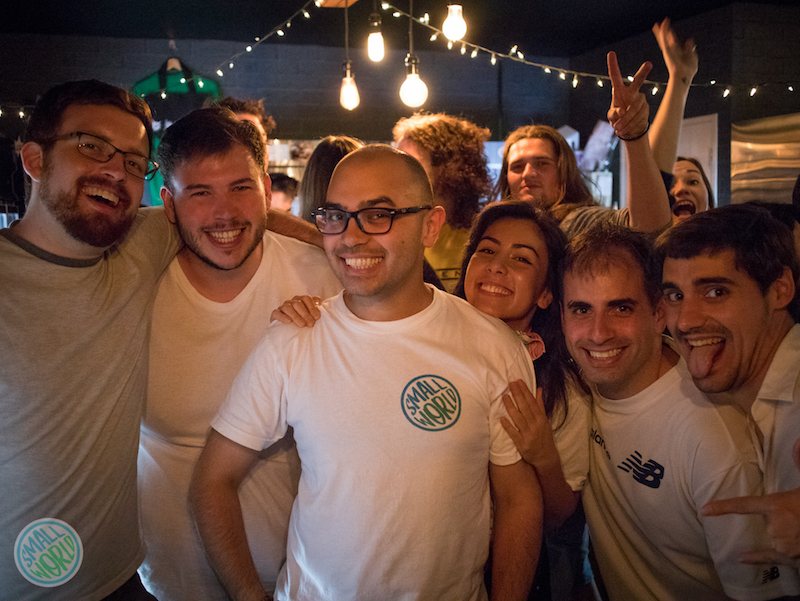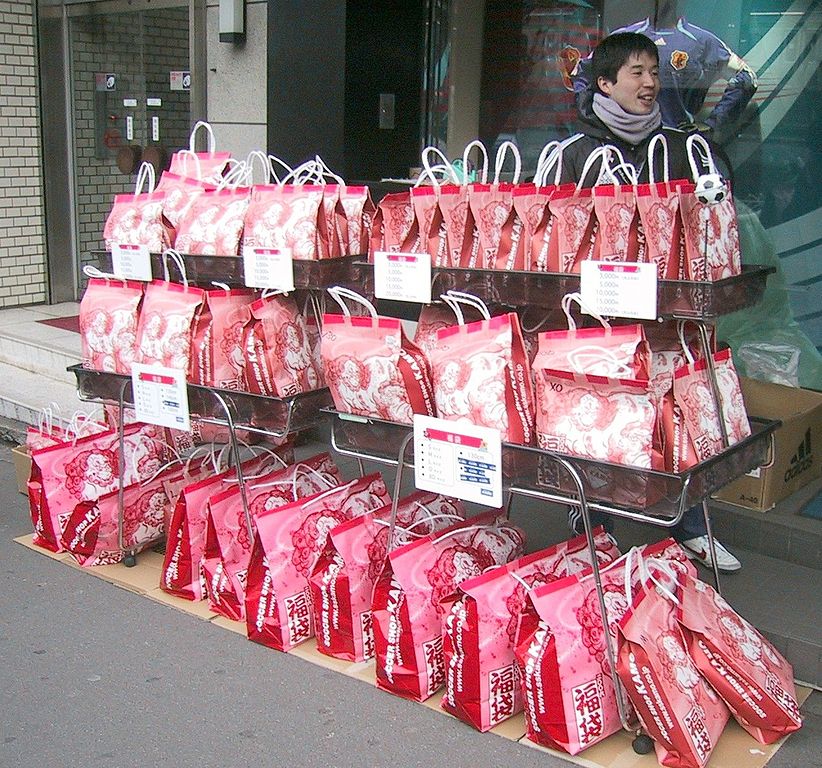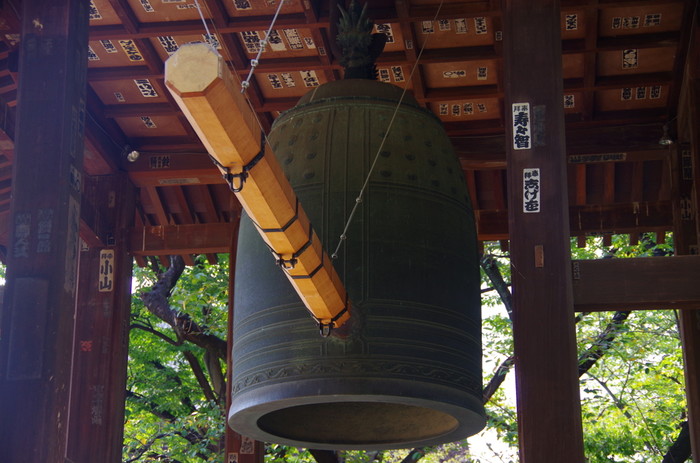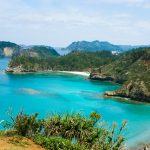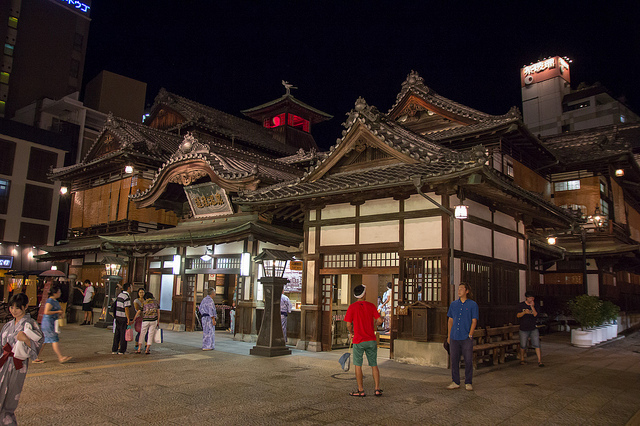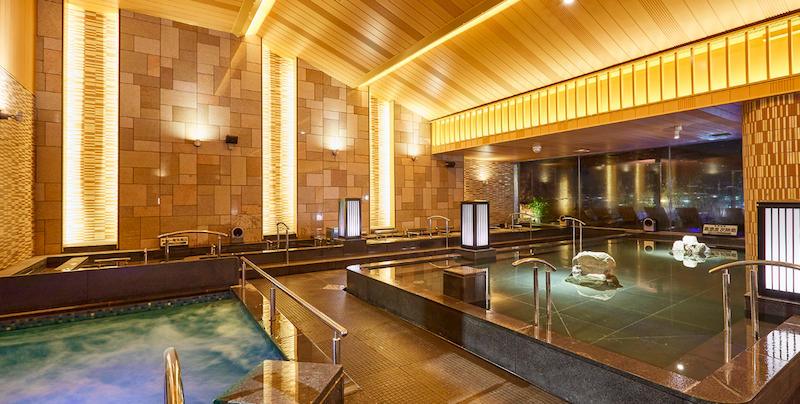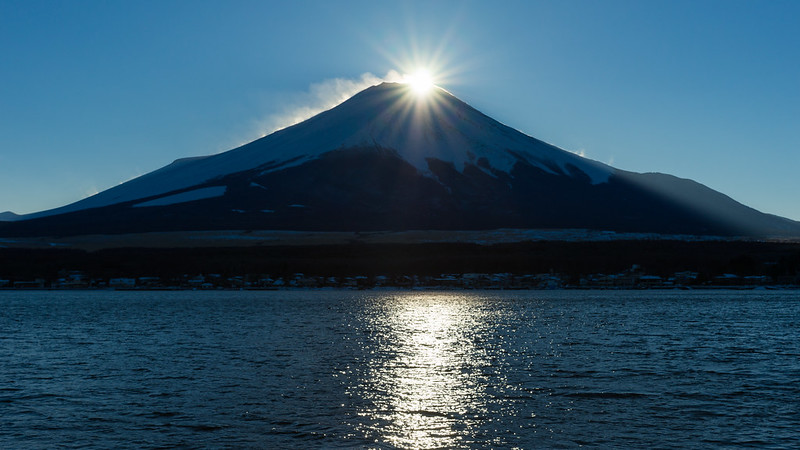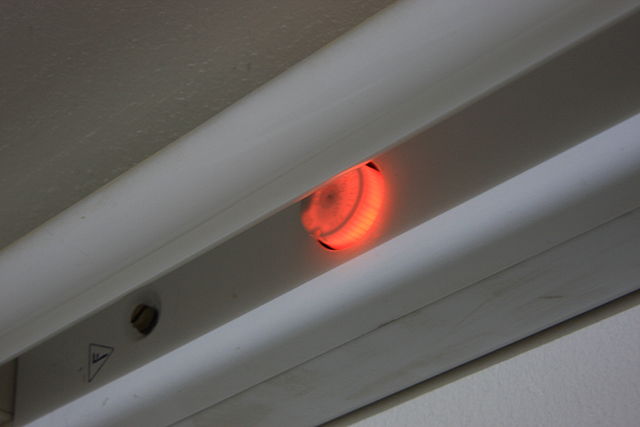Dec 28, 2019
A Big Part of Nagoya’s Community: Small World
One of the hardest things when coming to a new country is not only getting to know people but also knowing where to find them. Yes, we can meet people at work, or we can head to bars or coffee shops, but finding people who share our interests – or can open us up to new experiences – can sometimes be tough. This is where Small World comes in.
Since 2018, Small World has been the driving force behind meetups, social events, parties, and gatherings that foster a strong and vibrant international community for both expats and Japanese alike. The brainchild of Brit Matthew Chima and Brazilian Amanda Nanini Ayabe, Small World aims to bring the Nagoya community closer, so that everyone can share their passions, learn about other cultures and make friends for life, all while making Nagoya into the most exciting city in Japan.
How Small World began
“Creating Small World was never a plan for us – it happened organically. Somehow, we’d become the organizers of The MyBar International Party, and after a few months, its success was unexpected and undeniable,” says Matthew. “We then started to consider if we should start expanding into other events, to show everyone that Nagoya isn’t ‘Japan’s most boring big city’, as it’s often called – it’s actually a vibrant and exciting city, full of interesting people who are just waiting for you to meet them. We held our first event under the Small World name, our 2019 Hanami Party, and we pulled in over 150 people! We knew then that we were on to something big in Nagoya.”
What Small World does
The events Small World hold are as full and varied as the people of Nagoya itself.
“When the International Party became too big, we moved to the Emporium, where we now host Small World Big Party and have also held King of Karaoke. As well as our parties – with the ever-inspirational Tim Mullinnix bringing his boundless enthusiasm and inventive drinking games – we try to create events that are different from the norm and therefore aren’t very common but also sorely needed by the community. We try to fill niches and celebrate subcultures, so we’ve created events like Metal Meetup, organized with Travis Finch; Latin Night with skilled dancer and founder of the Nagoya Salsa Club, Sadihy Jimenez; Craft Beer Night; and took over the Trivia Night at Shooters,” continues Matthew.
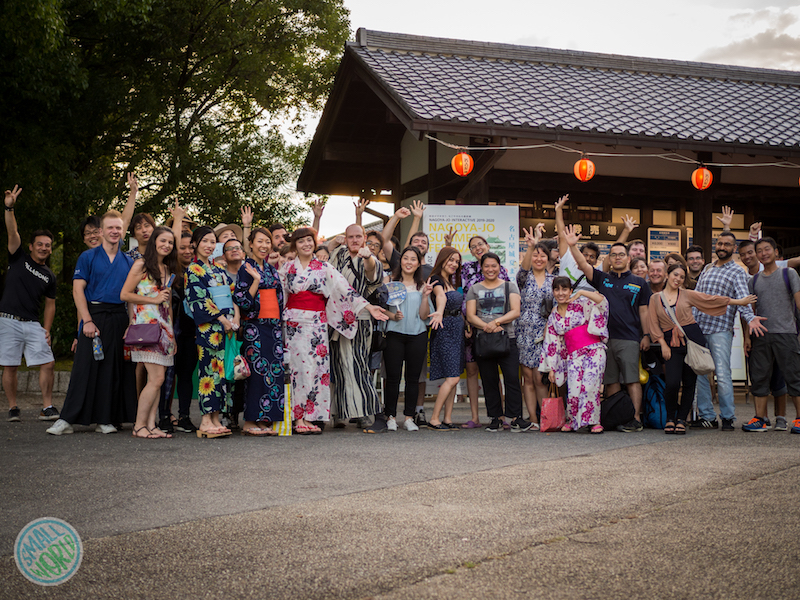
Aiming to make Nagoya a cleaner place, there are numerous environmentally conscious events such as the street clean-up event Sunday Pick Me Up, and an event for vegans, Clean Cuisine. Initially spearheaded by Kanae Hasegawa, these meetups are held in conjunction with Rodrigo Gutierrez, Katrin Funk , and Sherry Schafer – fervent environmentalists all, the latter two of whom also work with Fridays for Future and Climate Action Nagoya – and both events drive real positive change in Nagoya’s community with eco-habits and goals.
“Everyone we work with is passionate about the events that they are involved with,” continues Matthew.” They don’t see this as an obligation but as a purpose. They breathe life into these events, and that passion makes them extraordinary.”
The future of Small World
The last year has been one of continuous growth for Small World, but Matthew and Amanda are not looking just to sit back and reflect on their success.
“The last MyBar International Party will be this month, but we’re rebranding and kicking off again on February 1st with The International Party at Transit Studio Luggage. We’re using the opportunity to start fresh, with a big focus on style and quality. This time we’ll be working with Christian Ollier of Dope Jams fame to bring you some very talented DJs, and guests will also be able to grab some top-notch Mexican food from Jams Tacos located on the same floor,” Matthew says.
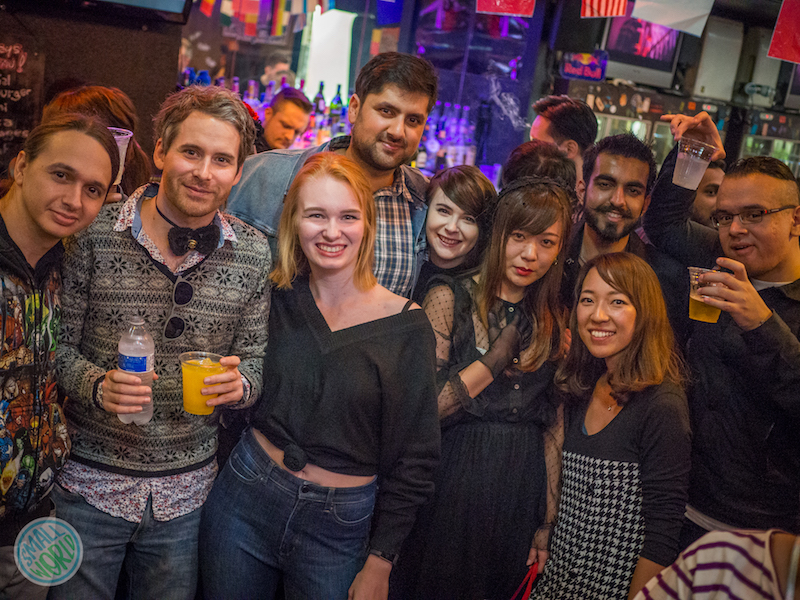
“There are some cool cultural events we’d like to get some people together for at the start of the year, the first of which is Hadaka Matsuri, or the ‘Naked Man Festival’, which I’m sure you guys are very eager to experience.
“We’ve also got some brand new events which cover a whole host of things including cabaret, sports, city adventures, eating contests, food and drink, language, games and some events for the Indian, Mexican, British and Brazilian communities. Small World’s sophomore year is going to be absolutely off the hook. It’s an exciting time to be in Nagoya!”
Getting involved
“We understand it can be scary walking into a room full of strangers. But the truth is that our community is the warmest, most open-minded, and friendly community in Nagoya. Every single person in our group would welcome you with open arms and a smile on their face.
“For me, our greatest success so far is managing to bring together all these fantastic people in Nagoya. I think the international community can be a little cliquey at times, with some friendship groups hanging out separately in different places across the city. Foreigners and Japanese people often spend time with their own, which is a shame. Small World has managed to bring a lot of these people together and created a kind of cohesive unit – the lines have become blurred, and at our events, everyone hangs out together.”
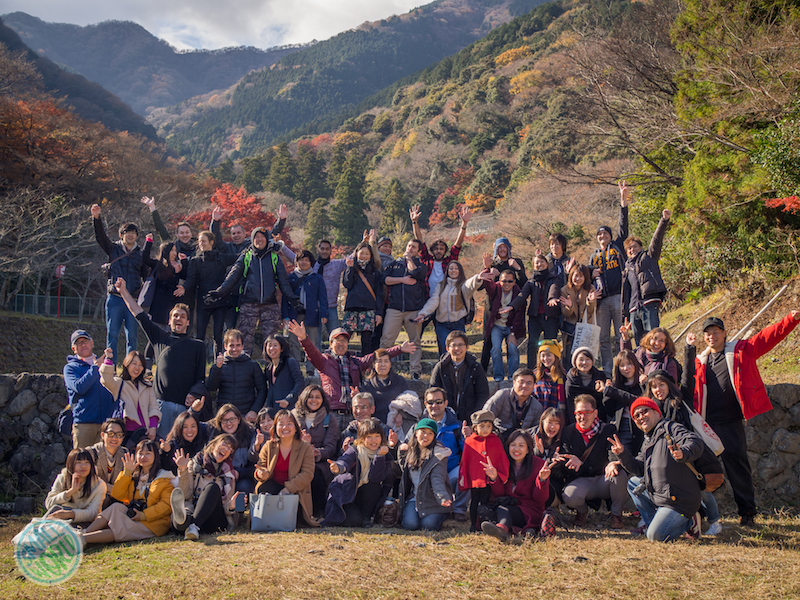
As Small World is doing stuff all of the time, the best place to see what is happening is to head over to their Facebook page and give it a like. That way, you’ll be updated with all of their going ons, and won’t miss a chance to meet amazing new people. So, what are you waiting for? Get out there and make Small World, your world!
Images: by Small World (Own Work)
Dec 27, 2019
Fukubukuro: Lucky Bag Shopping for New Years
 Forgetting the fact that Japan somehow now has a Black Friday manufactured shopping holiday in the middle of November, the traditional shopper’s marathon is the first three days of the year. It makes sense because most people are off work and school, workers are flush with their winter bonus pay, and kids will have received their New Year’s money envelope, called “Otoshidama (お年玉).”
Forgetting the fact that Japan somehow now has a Black Friday manufactured shopping holiday in the middle of November, the traditional shopper’s marathon is the first three days of the year. It makes sense because most people are off work and school, workers are flush with their winter bonus pay, and kids will have received their New Year’s money envelope, called “Otoshidama (お年玉).”
Stores put out their best “Fukubukuro (福袋),” literally “lucky bag” gifts for sale. These are bags filled with mystery merchandise that are often selling somewhere between 15~70% below retail– but the catch is no one knows what’s in the bags when they buy them! They are almost always a steal, and since the bags are limited in quantity, you will catch people lining up at the fashionable shops on New Year’s Eve to wait for the doors to open the next day.
If you are a shop-a-holic, then you can’t miss this tradition.
Chris 73 / Wikimedia Commons [CC BY-SA 3.0], ウィキメディア・コモンズ経由で
Dec 27, 2019
What to do in Tokyo over the New Year’s Holidays 2019
People say Tokyo is the most restless city in the world, but maybe they’ve never been here around the traditional New Year holiday period when most residents aren’t punching the clock. Instead, they are spending time with their families, often well outside the Metropolis in their hometowns. Pretty much any and everything is shuttered for the first three days of the year except convenience stores and certain retail shops. If you are a tourist or a new resident to the area, you will find the streets devoid of traffic, trains, and buses running a slow schedule and eerily uncrowded. You might even become bored! But fear not, for there are still things to do, starting on New Year’s Eve.
3-2-1, Happy New Year!!
Shibuya Crossing Countdown
 If you feel that you can’t do without the parties and Auld Lang Syne, Shibuya crossing is probably the one place in Tokyo that will have throngs of people counting down to the New Year. Like other western celebrations such as Halloween and Christmas, the pubs, clubs, and nightclubs of the area have seen the western style New Year as another money-spinning occasion and is usually the epicenter of Japan’s spin on countdown parties. At midnight many people gravitate towards Shibuya Crossing to count down to the New Year not unlike what you may see in Times Square or Piccadilly Circus.
If you feel that you can’t do without the parties and Auld Lang Syne, Shibuya crossing is probably the one place in Tokyo that will have throngs of people counting down to the New Year. Like other western celebrations such as Halloween and Christmas, the pubs, clubs, and nightclubs of the area have seen the western style New Year as another money-spinning occasion and is usually the epicenter of Japan’s spin on countdown parties. At midnight many people gravitate towards Shibuya Crossing to count down to the New Year not unlike what you may see in Times Square or Piccadilly Circus.
Shibuya Station
Shibuya Station, Hachiko exit, Shibuya-ku, Tokyo Map
Joya No Kane: Ringing in the New Year
 For a more somber approach, you can choose to head over to a local Buddhist temple and watch the “joya no kane” temple bell-ringing ceremony. On the last day of the year, the bell in the temple is rung 108 times to symbolize the ridding of the 108 earthly temptations to make our minds and bodies fresh for the new year. Most local temples have some form of this ceremony starting around 8 pm on New Year’s Eve; one of the best places to check it out in central Tokyo is Zojoji Temple.
For a more somber approach, you can choose to head over to a local Buddhist temple and watch the “joya no kane” temple bell-ringing ceremony. On the last day of the year, the bell in the temple is rung 108 times to symbolize the ridding of the 108 earthly temptations to make our minds and bodies fresh for the new year. Most local temples have some form of this ceremony starting around 8 pm on New Year’s Eve; one of the best places to check it out in central Tokyo is Zojoji Temple.
Zojoji Temple
4-7-35 Shibakoen, Minato-Ku, Tokyo
03-3432-1431
https://www.zojoji.or.jp
Chichijima Island: Beach New Year Countdown
As the land of the rising sun, what better place to celebrate the turn of the New Year than its earliest beach countdown ceremony on Chichijima island beach in the Ogasawara archipelago. There are Taiko drum displays, arm wrestling competitions, dance exhibitions, and the ceremony concluded with the first swim of the year and the release of baby turtles into the wild at sunrise. With a one-way boat trip taking up 25 and a half hours from Tokyo’s Takeshiba Passenger Ship Terminal, it’s certainly not the most accessible New Year party, but it is indeed one you will remember.
Chichijima Island Beach
Ogamiyama-koen Park Festival Plaza, Chichijima, Ogasawara-mura
04998-2-2587
www.ogasawaramura.com
2020 Day!
Whether you partied all night at a countdown party or watched the sun come up somewhere lovely on the first sunrise of the year, or fell asleep watching one of the numerous Japanese TV specials that air on NYE, you’ve officially made it to 2020… Now what?! The slowest day of the year in Japan is January 1st, and while you could stay home and do as the natives do, but you don’t need to be a homebody for the whole New Year’s break…
Lucky Bag Shopping!
 Forgetting the fact that Japan somehow now has a Black Friday manufactured shopping holiday in the middle of November, the traditional shopper’s marathon is the first three days of the year. It makes sense because most people are off work and school, workers are flush with their winter bonus pay, and kids will have received their New Year’s money envelope, called “Otoshidama (お年玉).” Stores put out their best “Fukubukuro (福袋),” literally “lucky bag” gifts for sale. These are bags filled with mystery merchandise that are often selling somewhere between 15~70% below retail– but the catch is no one knows what’s in the bags when they buy them! They are almost always a steal, and since the bags are limited in quantity, you will catch people lining up at the fashionable shops on New Year’s Eve just to wait for the doors to open the next day. If you are a shop-a-holic, then you can’t miss this tradition.
Forgetting the fact that Japan somehow now has a Black Friday manufactured shopping holiday in the middle of November, the traditional shopper’s marathon is the first three days of the year. It makes sense because most people are off work and school, workers are flush with their winter bonus pay, and kids will have received their New Year’s money envelope, called “Otoshidama (お年玉).” Stores put out their best “Fukubukuro (福袋),” literally “lucky bag” gifts for sale. These are bags filled with mystery merchandise that are often selling somewhere between 15~70% below retail– but the catch is no one knows what’s in the bags when they buy them! They are almost always a steal, and since the bags are limited in quantity, you will catch people lining up at the fashionable shops on New Year’s Eve just to wait for the doors to open the next day. If you are a shop-a-holic, then you can’t miss this tradition.
The best places? Of course, Akihabara, Omotesando, and Ginza, but pretty much every mall, plaza, and even online store will have a sale on.
Emperor’s New Year Address
 Usually, on January 2, the Emperor makes a public appearance at the Tokyo Imperial Palace. The palace is the primary residence of the Emperor of Japan, set in a large park-like area close to Tokyo Station. There are only two occasions a year on which the inner grounds of the palace are open to the public, and this is one of them, so it is a perfect time to satisfy any curiosity you may have after seeing it from afar. Being that this year will be the first address from Emperor Naruhito since taking the throne, it’s due to be a sight attended heavily. And family members are scheduled to address a gleeful crowd at 10:10, 11:00, 11:50, 13:30, and 14:20.
Usually, on January 2, the Emperor makes a public appearance at the Tokyo Imperial Palace. The palace is the primary residence of the Emperor of Japan, set in a large park-like area close to Tokyo Station. There are only two occasions a year on which the inner grounds of the palace are open to the public, and this is one of them, so it is a perfect time to satisfy any curiosity you may have after seeing it from afar. Being that this year will be the first address from Emperor Naruhito since taking the throne, it’s due to be a sight attended heavily. And family members are scheduled to address a gleeful crowd at 10:10, 11:00, 11:50, 13:30, and 14:20.
Tokyo Imperial Palace
1-1 Chiyada, Chiyoda, Tokyo
Official guide for Emperor’s New Year Greeting to the General Public at the Palace
Portions by Mark Guthrie
By chensiyuan (chensiyuan) [GFDL or CC BY-SA 4.0-3.0-2.5-2.0-1.0], via Wikimedia Commons– Modified
Via Zozoji Website with permission
By Anagounagi, Ogasawara Islands, Tokyo, Japan, size, CC BY-SA 4.0
By Trav1085 at English Wikipedia [CC BY-SA 3.0 or GFDL], via Wikimedia Commons– Modified
Dec 26, 2019
‘Spirited Away,’ to a Day Trip from Hiroshima
The cold weather at this time of year is the perfect opportunity to embrace the Japanese spirit and head to an onsen or hot spring. Although there are options within the surrounding area, and of course, to the north, people who dislike the cold may look for an alternative. That alternative is Matsuyama.
Matsuyama is located on the island of Shikoku, south of Hiroshima, which means temperatures are usually a little warmer. Although it is on a completely different island, the fast and efficient “Super “Jet” high-speed boat that runs between Hiroshima and Matsuyama means it is possible to do as a day trip.
The high-speed boat leaves from Hiroshima Port (starting at 7.30 am) and takes approximately an hour to Matsuyama. There is also the option to catch it from Kure, which means it leaves later than from the Port by about 23 minutes. The full timetable and prices on the website.
Hiroshima and Kure ⇔ Matsuyama High-Speed Ship “Super Jet”
www.setonaikaikisen.co.jp/language/en/superjet
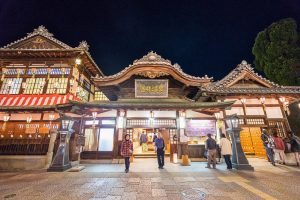
Dogo Onsen Honkan
Matsuyama is filled with plenty of history and is most famous for its castle perched on top of the hill overlooking the city. The other famous attraction is, of course, Dogo-onsen, the oldest in Japan and the inspiration for the onsen in Hayao Miyazaki’s famous anime, ‘Spirited Away.’
Perhaps the most famous story associated with the onsen is the legend of the white heron. The story goes that it bathed its injured leg every day in hot water that came from a rock. It was soon restored to health, and after it flew away, the story of the healing water began to spread.
The onsen’s water supply is from a total of 17 springs that rise through cracks in the granite 200-1000m underground. The temperature sits at a comfortable 47 degrees Celsius, and the alkaline water is said to provide relief for a range of ailments from simple muscle pain to digestive illnesses.
Four types of bathing are available, and the opening hours are from 6 am until either 10 or 11 pm, depending on which type of bath you have chosen.
A bus is available to Dogo Onsen Tram stop from the ferry terminal. The bus takes 40 minutes, and the onsen itself is then a four-minute walk from there.
Although the trip is easily done in a day, it is a little pricey. The ferry doesn’t come cheap, but for the short time it takes to arrive and the reward of the onsen, it is still highly recommended. Why not take some time off during the new year and head to Matsuyama for a day of history and relaxation at the oldest and most famous onsen in Japan.
Photo: via flickr.com by Christian Kaden (CC BY-SA 2.0)
Photo: via flickr.com by Wei-Te Wong (CC BY-SA 2.0)
Dec 26, 2019
Soothe Yourself With a Soak in a Super Sento in Nagoya This Winter
One thing that many people love to do when they come to Japan is to enjoy onsen, the volcanic hot springs that pop up all over the country. It is an intrinsic part of the Japanese culture to partake in these communal baths, and no trip to the country is complete without it.
However, the onsen is not the only place the locals go to soak in the tub. Particularly when not in the more seismically active areas of Japan (of which Nagoya is one), people still like to get naked and sit in a steaming bath and let the worries of the world wash away. For many, this means going to sento. For those who want to make an experience of it, that means super sento.
What’s a Super Sento?
Back in the days before the advent of running water in homes, many Japanese would go to sento, communal bathhouses in which, for a small fee, you could get yourself clean and relax together in the large bath. Today there are far fewer of these bathhouses. However, many people still believe in the importance of ‘hadaka no tsukiai’ (naked communication), in which everyone, rich or poor, worker or boss, old or young, is stripped down and placed on a level footing, many still exist in local communities, often marked with the Japanese character ゆ (yu), symbolizing hot water.
Super sento are the Disneyland of the sento world. They are vast, sprawling enterprises that often include saunas, steam baths, jacuzzis, and in some instances, may even have a water slide. Some may also offer medical baths, massages, mud baths, and fitness centers, and the larger ones may have restaurants and karaoke.
Super Sento in and Around Nagoya
There are many Super Sento in the Nagoya area, here are a few that you could check out.
Ozone Onsen Yunoshiro
Onsen Yunoshiro has twelve different baths, all of which are designated as ‘nano-springs’, which means that they claim to have high heat-retention qualities. Some of the baths are designed to look like famous onsen from around Japan, such as Ibusuki and Kutatsu.
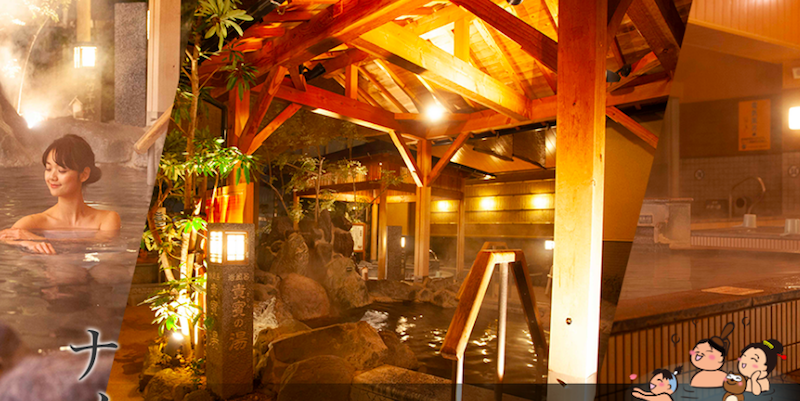
After bathing, you can dine at their restaurant, which serves Japanese classics such as curry and rice and tempura rice bowls, as well as Nagoyan cuisine, including Ankake Pasta and Kishimen.
Where: 28-7 Higashi Ozone-cho, Higashi-ku (map)
Website: p-castle.co.jp/yunoshiro
Tenku Spa Hills Ryusenjinoyu Nagoya-Moriyama
Despite its claims to be the first super sento on all of Japan, Tenku Spa Hills is a top of the range bathing facility. There are thirteen types of bath, including ‘fantasy baths’, some of which are illuminated to look as though you are bathing amongst the stars, as well as an open-air bath that provides stunning night views of the city.
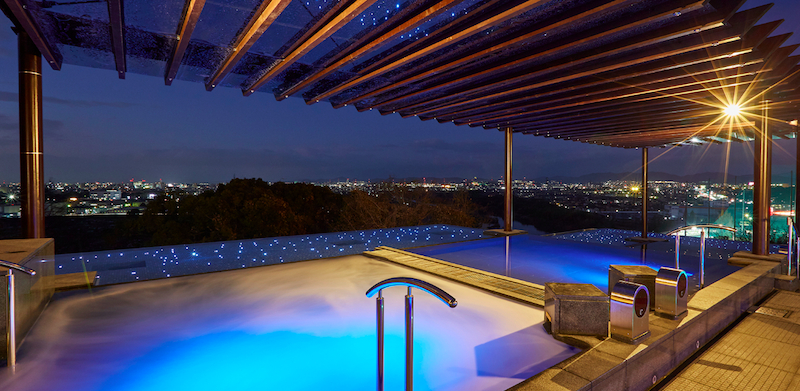
There are a number of other facilities, such as sofa beds, saunas, hot stone baths, restaurants, and cafes. Still, Tenku Spa Hills’ biggest selling point is the high concentration of carbonation in the water, creating a champagne bath effect that is said to improve the heat absorption of the water.
Where: 1 Chome-1501, Ryusenji, Moriyama Ward, Nagoya, Aichi 463-0801 (map)
Website: ryusenjinoyu.com/moriyama
Utopia Takara
Being part of a hotel complex, Utopia Takara is the largest super sento in the Nagoya area and is open 24 hours a day (though the baths are closed for cleaning between 3:00 and 6:00 in the morning).
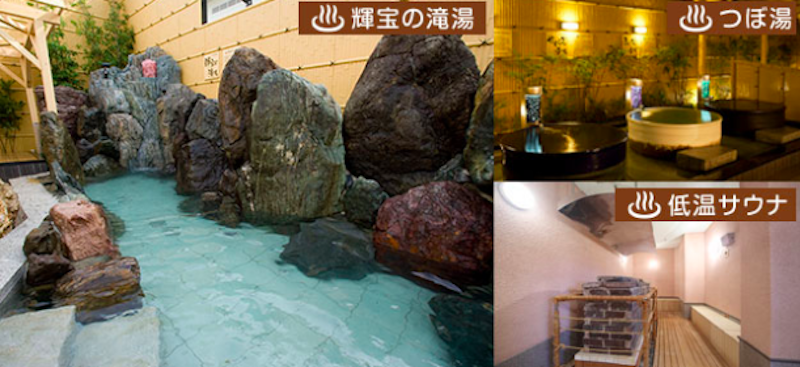
There are thirty different baths, including a medicinal bath, a bath made of cypress wood, and a bubble bath. You can also enjoy eight different saunas, take your pick from 12,000 manga, and there are plenty of games for your kids to play with.
Where: Minami Ward, Maehamatori, 1 Chome−9 (map)
Website: yu-t.com
SPA&LIVING Urban Quar
While the water at sento is most often electrically heated, Urban Quar is fed from a hot spring 800 meters underground. The concept here is to relax as if you were at home, and the expansive rest areas have large, comfortable sofas, massage chairs, comic books, and computers as well as aromatherapy and Korean body scrub treatments.

There are eleven kinds of baths, including jet spas and carbonated springs. There is also a hot stone bath and two saunas. When you are done, indulge in the soba dishes that use 100 percent Juwari soba, something that you can only usually find in specialist soba stores.
Where: Naka Ward, Fujimicho, 16 − 17 Kyassurutaun kinen-bashi 3 F (map)
Website: p-castle.co.jp/urban_quar
Sumino-Yu (Charcoal Bath)
If you are looking for a real authentic Japanese sento experience, Sumino-Yu (meaning ‘charcoal bath’) is the place for you. This place is old school in the best possible way and has been beautifully renovated. The baths use infrared-infused charcoal, which is intended to be gentle on the skin and warming.
They have an outdoor bath, a cypress bath, a jet pool as well as a ‘denki buro’, which is a bath that has a low-frequency current of electricity in the water, which is supposed to aid in the healing process.
Where: 2-11-8 Kamejima, Nakamura Ward (map)
Website: suminoyuhotel.com
Things you should know about Super Sento
- Most sento may allow you to rent towels and charge you a small fee for soap, shampoo, and toiletries. You may want to ask before you arrive, or bring your own just in case.
- Many sento, like onsen, are a bit funny when it comes to tattoos. If you have a tattoo, check with the bath before you arrive if they are accepted.
- Most sento are for naked bathing, while some that allow unisex bathing will require you to bring a swimming suit. If you go to the latter, you may bring your own or rent one when you are there. Be aware, however, that they may stock Japanese sizes only.
Image: by http://www.p-castle.co.jp/yunoshiro/hotspring.php#anchor_tansansen – screenshot
Images: by https://www.ryusenjinoyu.com/moriyama/ – screenshot
Image: by https://www.yu-t.com/bath/ – screenshot
Image: by http://www.p-castle.co.jp/urban_quar/onsen.php – screenshot
Dec 26, 2019
Diamond Magic – Witness The Diamond Fuji Phenomenon
Diamond Fuji is a twice annually occurring phenomenon during which the sunrise and sunset align perfectly with Mount Fuji’s summit, looking for all the world like a bright shining jewel placed atop the nation’s crown. There are many great places from which you can witness this startling sunset just a few hours from Nagoya
The Diamond Fuji occurs from October to February, but with weather conditions obscuring views in the earlier months, this beautiful sight is best observed in January and February. Many of the suggestions below take a bit of hiking to get to, so be prepared for a walk. Also, it is advisable to wrap up warm, as when the sun drops, it gets pretty chilly!
Lake Yamanaka
Viewing Platform in Hirano
Yamanaka-ko, in the shadow of Fujisan itself, is a picturesque option for taking in the Diamond Fuji experience. There are many places around the lake from which to see it (this website here will give you a more extensive list), with the pick of the bunch being the Panoramic Viewing Platform in Hirano. It’s not the most accessible of locations, being 30 minutes from Fujikyoku. Still, it is a great place to witness the Double Diamond effect, with the mountain and sun both reflected in the lake below. Truly magnificent. Also, weather permitting; you may be treated to a view of Japan’s Southern Alps.
Address: Parking Lot along north-heading prefectural road 147 (map)
Yamanakako Water Park
For more lakeside viewing, you could head to the Yamanakako Water Park. While it will still be a bit too chilly to engage in any water sports there, the tranquil lake provides another excellent opportunity for viewing the ‘Double Diamond’ effect. There is an observation deck at the lakeside with a telescope, but it goes without saying that the telescope is not to be used to look at the sunset. Not if you want to keep your retinas, that is.
Address: North lakeside of Yamanakako, along Marimo dori (map)
Mikuni Mountain Pass
If you are later in the season, you might want to head up to the lookout point halfway up the Mikuni Mountain Pass on the road from Hirano towards the Oyama-cho area. It is an extremely popular spot, but it has the advantage of showing off the diamond spectacle until October 25. As road surfaces can freeze, winter tires or chains on your car are advisable.
Website: yamanakako.gr.jp
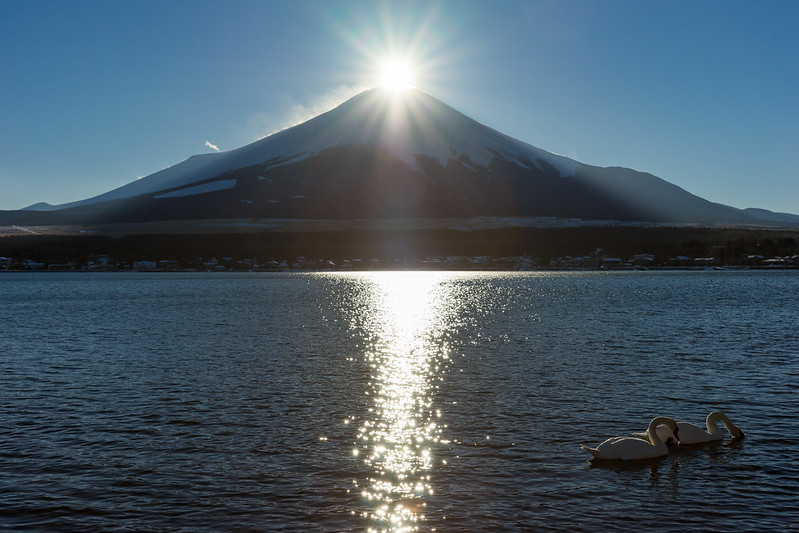
Mount Minobu
The top of Mount Minobu in Yamanashi Prefecture is another dramatic spot from which to watch the Diamond Fuji spectacle. The more adventurous of you may wish to hike up there, but it is also accessible by taking the Minobu-san ropeway. As well as seeing Mt Fuji, there are several hiking trails on Minobusan, beautiful shrines, and onsen in which to relax later.
Address: Yamanashi ken Minamikoma-gun Minobu-chō Minobu 4226 (see map for details)
Lake Tanuki
On the Shizuoka side of Mount Fuji, Lake Tanuku in Fujinomiya City is another marvelous place from where you can see the Double Diamond Fuji effect, with the sun and mountain reflected in clear, still waters. It is by no means an easy trip, however, so it is recommended that you make the most of the journey and perhaps camp for the night.
Oh, and before you start packing your bags and heading up there, be aware that, being on the Shizuoka side of Mt Fuji, Lake Tanuki is only good for seeing the Diamond Fuji from April to August.
Address: 2929 Inokashira, Fujinomiya, Shizuoka (map)
Hotel Green Plaza Hakone
Perhaps the thought of standing outside in the cold on chilly nights doesn’t exactly drive you wild? Well, how about taking a more luxurious option, and head to the Hotel Green Plaza on Mt. Hakone. This sumptuous onsen hotel has open-air baths with views of Mt. Fuji, so you can happily soak in the hot springs as you watch the sun fall behind the iconic mountain. Confirm with hotel staff for exact of the Diamond Fuji dates before arrival.
Address: 1244-2 Sengokuhara, Hakone, Ashigarashimo District, Kanagawa Prefecture (map)
Website: hgp.co.jp
Image: by peaceful-jp-scenery (busy) via flikr.com [CC BY-NC 2.0] – modified
Image: by peaceful-jp-scenery (busy) via flikr.com [CC BY-NC 2.0] – modified
Dec 26, 2019
Snow Festivals in Japan
Because Japan is over 70% mountainous and located in the temperate latitudes of the western Pacific where the moist ocean air continually does battle with dry, cold Siberian and Mongolian air coming in from China, the Japan Alps enjoys a healthy dusting of snow every winter. No part of Japan (even Okinawa) is less than a few hours by car, plane, or train ride from enjoying a winter wonderland. For some, that means skiing or boarding the slopes, but for others, it means turning those frozen crystals into works of art in the form of snow and ice sculptures. Taking place in more places than you may have thought, you can usually find one in many places in the snowy parts of Japan.
Sapporo Snow Festival
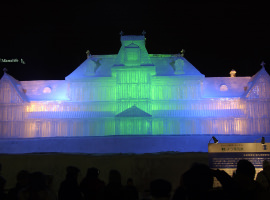 Let’s start with the 900-pound gorilla that perhaps is the most famous snow festival in the world, if not just Japan. The first week in February has the whole downtown section of Sapporo in the northernmost island of Hokkaido turned into a frosty fantasyland with ice sculptures and even small replicas of famous buildings standing 15 meters tall or more. Most sculptures will be centered on Odori Park in the middle of town and open 24 hours for the whole week, but check out the Tsudome area where there are mini snow raft rides and Susukino to see the ice sculpture contest.
Let’s start with the 900-pound gorilla that perhaps is the most famous snow festival in the world, if not just Japan. The first week in February has the whole downtown section of Sapporo in the northernmost island of Hokkaido turned into a frosty fantasyland with ice sculptures and even small replicas of famous buildings standing 15 meters tall or more. Most sculptures will be centered on Odori Park in the middle of town and open 24 hours for the whole week, but check out the Tsudome area where there are mini snow raft rides and Susukino to see the ice sculpture contest.
Web: https://www.snowfes.com/english/
Dates: February 4-11, 2020
Place: Odori Park, Sapporo, Hokkaido
Aomori Yukiakari Matsuri
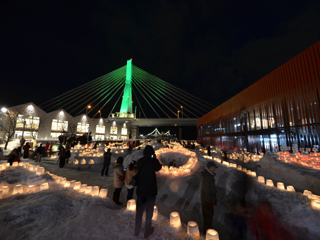 This festival is held in the northern prefecture of Aomori where the residents of the city create displays in the snow made with candlelight. You can also participate by decorating your own candle holder, and add to the wishes of the townspeople.
This festival is held in the northern prefecture of Aomori where the residents of the city create displays in the snow made with candlelight. You can also participate by decorating your own candle holder, and add to the wishes of the townspeople.
Dates: January 31 – February 2, 2020
Place: Nebuta House Museum
Urabandai Snow Festival “Night Fantasy”
 Coming back a little bit closer in Tohoku is the town of Urabandai in Fukushima where they like to build igloos, light candles in the snow and have a fireworks festival under the clear cold starlit night!
Coming back a little bit closer in Tohoku is the town of Urabandai in Fukushima where they like to build igloos, light candles in the snow and have a fireworks festival under the clear cold starlit night!
Web: Urabandai Tourism Official Website
Dates: February 15, 2020, 10:00 – 20:00
Place: Urabandai Site Station
Tokamachi Snow Festival
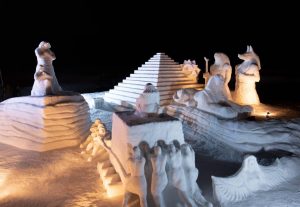 Last on our list, but certainly not least, is this snow fest in Niigata Prefecture, known for getting a bunch of the fluffy cold stuff every year. Known for being one of the best places for skiing in Japan, Tokamachi’s residents like to get into the spirit and sculpt characters out of ice and snow. At the same time, the town creates a carnival atmosphere with a kimono fashion show, concerts, and culminating with fireworks. Even the stage itself is one big snow sculpture!
Last on our list, but certainly not least, is this snow fest in Niigata Prefecture, known for getting a bunch of the fluffy cold stuff every year. Known for being one of the best places for skiing in Japan, Tokamachi’s residents like to get into the spirit and sculpt characters out of ice and snow. At the same time, the town creates a carnival atmosphere with a kimono fashion show, concerts, and culminating with fireworks. Even the stage itself is one big snow sculpture!
Dates: February 14 – 16, 2020
Place: City of Tokamachi, Niigata
Images via Sapporo Snow Festival Official Website, Aomori City Tourism Office, Urabandai Tourism Office, Tokamachi Snow Fest website
Dec 26, 2019
Cultural Kawabun – Exploring Japanese Culture at Nagoya’s Oldest Restaurant
Japan has a rich and long artistic heritage, something that many people travel from all over the globe to see. For the most part, they go to Kyoto and Tokyo to see the best-known events, but did you know that here in Nagoya, you can get up close and personal with some of Japan’s most exceptional art forms? Not only that, but you can do it within one of our city’s oldest – and most highly regarded – restaurants: Ryotei Kawabun.
About Ryotei Kawabun
For some 400 years – since around the same time as Nagoya Castle was first built – Kawabun has been a watchword for culinary excellence. Beginning life as an upmarket fishmonger, it was recognized and patronized by the connoisseurs amongst the ruling Tokugawa Owari clan, and the family-run establishment branched out into the restaurant industry.
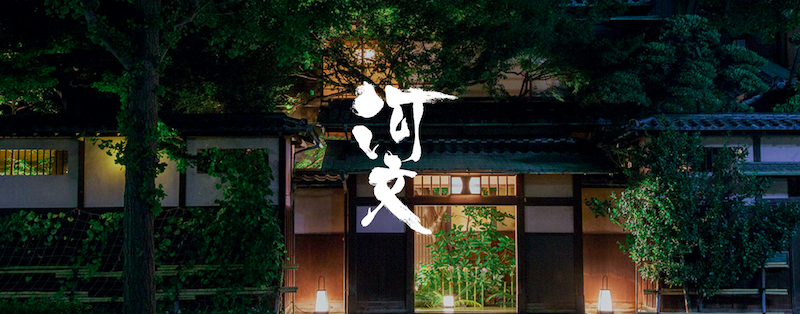
Today, despite being modified down the centuries, it is a living monument to the elegance and refinement of that age – as well as that of the Meiji era, to which many of the more modernized structures pay homage. It is considered one of the most exquisite examples of classic Japan in Nagoya. All of which makes it the ideal place for you to discover the wonders of Japan’s rich cultural tapestry.
Cultural Heritage Nights at Kawabun
During the economic and cultural overhaul brought about by the Kyoho Reforms (1736), Kyoto’s power waned, and Osaka fell out of fashion. Taking their place, Nagoya became a center of the arts, a bustling metropolis at the heart of an aesthetical revolution, and it this era that the Cultural Heritage Nights at Kawabun celebrate.
Between December 19, 2019, and February 21, 2020, Kawabun hosts regular events that showcase the unique art forms that Japan has to offer. Every weekday evening, you can see performances of Japanese buyo dance, classical Japanese instruments, samurai sword displays, traditional magicians, and readings of a religious sutra. The geisha and maiko [trainee geisha] who perform the dances are closely connected to the great geisha houses of Kyoto, and the other performers are of high reputation. As such, seeing them up close in this way is a real treat that you will never forget, and are unlikely to see elsewhere.
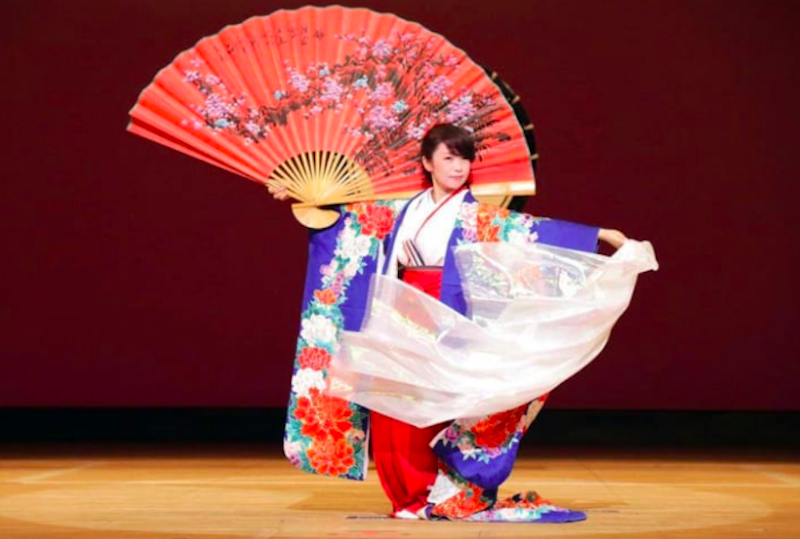
But the cultural evenings are not just about watching, but also taking part, as you have the opportunity to try on exquisite kimono or even enjoy playing ozashiki-asobi, traditional Japanese parlor games, amongst which include an old form of casino.
Getting involved
The events run Monday to Friday, beginning at 21:30 and going on until around 23:00. For your 5,000 JPY entrance fee, you get an evening of entertainment plus one drink (should you wish to enjoy more drinks they can be purchased on a pay-as-you-go basis). During each event, you can mingle with the performers, take photographs, and enjoy an experience that will remain with you for a lifetime.
Ryotei Kawabun Details
Where: 2-13-4 Marunouchi Naka-ku (map)
Website: thekawabunnagoya.com
Tel: 052-222-0873
Different events are held throughout the week. If there is a particular event that you are interested in, it is suggested that you contact Kawabun to confirm the details.
Reservations are recommended, as should there not be the minimum participants, the event may be cancelled.
Images: https://www.thekawabunnagoya.com/en/kawabun/topics/culturalnight/
Dec 26, 2019
Sake Bank Hiroshima: Japanese Sake Tasting
In my work in tourism, I’ve often had the pleasure of taking guests to breweries or to bars in other cities where we sample the delights of high-quality “nihon shu,” or sake, which is what prompted my article about Japanese sake a month or so back. I know you’re probably dying to get out there, but for some, the hike to Saijo or other locations further afield might be a stretch so as they say if the mountain won’t come to the mountain…there is now a venue in Hiroshima offering a tasting experience downtown called Sake Bank.
Walking in, apart from the pleasant atmosphere, you notice the showcase of glass front refrigeration units lining the wall presenting an abundant selection of over 100 types of Japanese sake selected from all over Japan. The selection is mainly local Japanese sake from Hiroshima the Chugoku region for you to choose from, and it is all self-service style, help yourself from the showcase refrigerators. Uh oh! It is an all-you-can-drink system.
The charge is for the time spent there, and it’s a pretty good deal particularly considering the range and quality of Japanese sake available: 30 minutes ¥1,200、60 minutes ¥1,800、90 minutes ¥2,400、180 minutes ¥3,600.
There are snacks and the typical accompaniments to nihon shu (dried squid, rice crackers), but you’re allowed to take snacks in with you. Here’s the thing, the charge is to avail yourself of the premises during which time you are invited to drink as much as you would like. You are welcome even to BYO food or drink, but I remind you that there is plenty to drink there to ensure your opportunity to enjoy your tasting experience fully. Every day is a sake festival at your doorstep.
Tetsuya Amada, the Hiroshima born sommelier, worked in sales. If you know the culture, that means he has spent a lot his evenings during that time at hundreds of restaurants and bars entertaining clients and guests. His love of travel reinforced in him the depth of Japanese culture, and he concluded that he could combine all his experiences (and leave the daily grind ) to open a venue that specializes in nihon shu that creates a unique cultural experience for Japanese and foreign visitors alike.
So, give yourself a Japanese sake tasting experience.
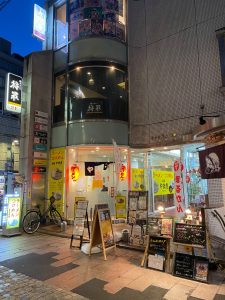
Castle Tatemachi Building
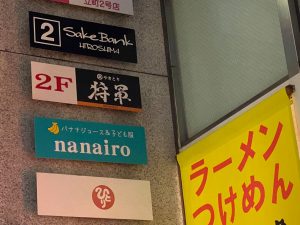
Sake Bank Hiroshima
Access: This gem is a 2-minute walk from the Hiroden Main Line Tatemachi Station, tucked away on the 2nd floor of Castle Tatemachi Building just off the Hondori Shopping arcade, a stone’s throw from Fukuya Department Store.
Address: 203 Castle Tatemachi Building (キャッスル立町) 5-2 Tatemachi, Naka-ku (map link)
Hours: Monday to Friday (closed Tuesdays): 17: 00-midnight (last entry 23: 30) Saturdays, Sundays, and holidays 14: 00-00: 00 (last entry 23: 30)
050-5263-4502
Photos By Hugh Cann
Dec 19, 2019
Fluorescent Light Maintenance and Glow Lamp Replacement
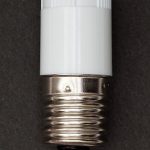 A fluorescent lamp uses fluorescence to produce visible light. An electric current in the gas excites mercury vapor, which produces short-wave ultraviolet light that causes a phosphor coating on the inside of the lamp to glow. Fluorescent lamps require a ballast to regulate the current through the lamp, and a “glow lamp” or starter, which brings us to the topic today. The “glow lamp,” of fluorescent lights. We sometimes receive emails regarding fluorescent light problems such as:
A fluorescent lamp uses fluorescence to produce visible light. An electric current in the gas excites mercury vapor, which produces short-wave ultraviolet light that causes a phosphor coating on the inside of the lamp to glow. Fluorescent lamps require a ballast to regulate the current through the lamp, and a “glow lamp” or starter, which brings us to the topic today. The “glow lamp,” of fluorescent lights. We sometimes receive emails regarding fluorescent light problems such as:
“The circular fluorescent light in the bathroom keeps flashing and does not turn on.”
“From time to time, the light flashes a bit even after the tube was replaced.”
In these cases, there might be a problem with the glow lamp.
If you are having problems, please look for a glow lamp in your light. You may be able to solve them by replacing the starter, or glow lamp. You can find some examples of glow lamps for sale here.
And here is a short video about replacing the glow lamp in fluorescent lights.
Photo by D-Kuru [CC BY-SA 3.0 at], via Wikimedia Commons
Photo by Kiyok [CC BY-SA 3.0], via Wikimedia Commons
